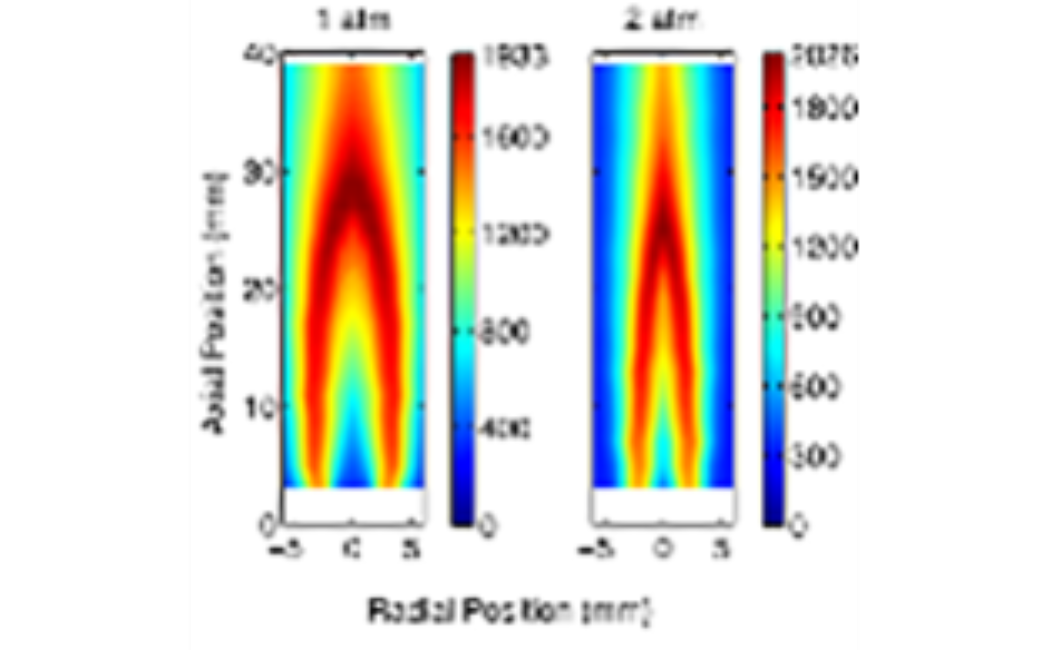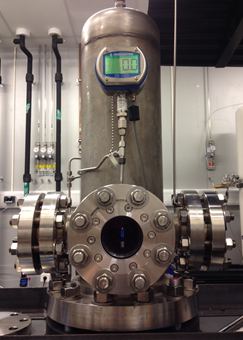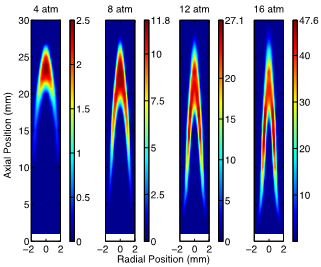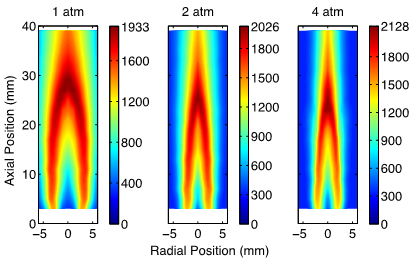


Soot is hazardous to human health, the environment, and combustion device performance. In order to better control it, we must understand how the high pressure environments it experiences in gas turbine and diesel engines affect its formation. The sooting characteristics of diesel and jet fuel flames are of particular interest. Laminar co-flow diffusion flames are investigated in a high pressure vessel through a combination of non-intrusive laser diagnostics and imaging, and intrusive probing. These techniques are used to measure soot concentrations, temperatures, and gaseous species concentrations throughout the flame. These measurements provide data necessary to validate computational models, which are useful in helping us understand and predict soot formation.

Liquid fuels are pre-vaporized using an electrospray atomizer. Line of Sight Attenuation (LOSA), Laser Induced Incandescence (LII), and Spectral Soot Emission (SSE) are used to determine soot concentrations, while SSE also allows soot temperature to be determined. Thermocouple measurements of the flame provide gas temperatures. Gas from the flame is sampled using a quartz probe, and analyzed using GC-MS/FID to determine composition


